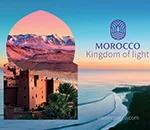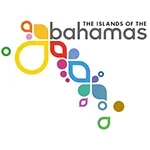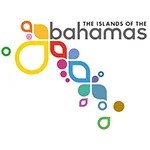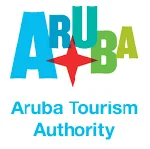 Travelers rely more on technology now than ever, and as we move deeper into the 21st century, that reliance will only grow, affecting how we search for value, convenience, discovery, and experience.
Travelers rely more on technology now than ever, and as we move deeper into the 21st century, that reliance will only grow, affecting how we search for value, convenience, discovery, and experience.
The technological aspects of travel don’t fall solely under communicators’ purview, but understanding customer expectations and how they rely on technology and content is firmly in PR’s wheelhouse. After all, the PR professional plays a role in each part of the customer lifecycle from discovery to loyalty.
The following proprietary insights from Cision’s Global Insights team came from thousands of news and social media conversations about technology and the travel experience. Though the insights relate specifically to travel and tourism, PR professionals in all industries can use the best practices associated with the information to better their communication in the near- and long-terms.
Exceed Wi-Fi expectations
Many in business swear by the adage, “Under-promise and over-deliver.” To do that, you first need to know what your audience truly wants.
As a whole, travelers expect to have easy and fast Internet access for their mobile devices. Just because travelers leave home doesn’t mean they want to leave their technological creature comforts behind.
Wi-Fi availability in a hotel room has become as expected as a bed. However, our data show travelers feel that connection speeds offered often don’t adequately meet their needs.
As this is a major pain point among leisure and business travelers, hotels and airlines should explore technologies that speed up connections. It just might be the differentiator that drives a customer away from a competitor.
In today’s world, people turn to social to express frustration or joy about even the smallest parts of their day. For brands, the ability to draw insights from social (and traditional and digital) media gives them a crystal ball.
Almost every airline and hotel has Wi-Fi, but did they know that what they provided didn’t meet expectations? Probably not since it’s an ongoing problem.
Every industry has “weak Wi-Fi,” an issue that if remedied would separate one brand from the rest. It’s time for communicators to seize, share and act on that data, or else their competitors will.
Context dictates platform
On average, travelers have 3.2 travel apps and rely on 2.2 of them. This is helpful information, but it doesn’t paint the whole story. Communicators need to know how people use mobile apps.
Our data indicates mobile users rely on travel apps more while traveling than for booking because comparison shopping plays a big role in the consideration phase.
That insight should shape mobile app content strategies. To appeal to the on-the-move traveler, provide easy access to boarding passes, reservations and dining and entertainment options in the destination city. Itching for more sales? Consider the Progressive Insurance model and allow customers to compare prices in app.
How else do travelers use their apps? Though not the preferred method for booking travel well in advance, mobile apps are where time-crunched users turn to find a way to or a place to stay at their final destination.
Apps like Hotel Tonight and Booking Now capitalize on this by offering low-priced, last-minute options for lodging. Branded hotel apps would likely drive app usage by providing similar opportunities. But just because the traveler has to make plans quickly doesn’t mean they will sacrifice research. Provide the same information available on your company website in a mobile-friendly format.
Communication professionals should strive to understand how their target audiences use the platforms on which they serve content and conversion opportunities.
That’s not an idea exclusive to apps. It should help shape what content you create for Facebook versus Instagram, your nurture goals for mobile audiences versus desktop and a million other possibilities.
When you customize your platforms to create experiences that cater to the context of your audience, you will better nurture prospects and instill loyalty with the people you reach.
Social skills shine
Innovation that provides solutions to a population’s hassles will always be front page, shareable news.
Starwood Hotels & Resorts made waves when they created a solution to everyday traveler pains using media intelligence and insights.
Last November, Starwood announced it would become the hospitality industry’s first company to turn guests’ smartphones into room keys through the power of a Bluetooth-enabled lock.
More than a novelty, Starwood developed the technology to satisfy a large segment of its audience: travel-weary business people looking to more easily navigate the hotel experience.
Technology doesn’t deserve all the credit for the buzz Starwood produced. The communication team strategically spaced out its communication to create two spikes of news.
The first came on November 3, the date of their first press release announcing the updated app. Four days later, another press release provided information about how the system worked and created a smaller bump after the initial news faded.
Starwood also relied on its social channels to amplify the most enthusiastic pieces of coverage and deliver promotional and general information across its website and social channels. Its YouTube channel, for example, had its own keyless entry playlist that grabbed nearly 200,000 total views.
About a month later, to spike interest again, Starwood used influencer marketing, having Apple Co-Founder Steve Wozniak star in a video in which he shows how to use keyless entry that garnered 45,000 views.
Each social channel provided a link back to the Starwood website where more information and downloads were available.
Moving forward
Satiating technological desires to aid audiences’ discovery, browsing or shopping experiences goes beyond the travel and tourism industry. Communicators too often play catch-up with consumers’ evolving habits even though they have access to real-time information about their audience’s biggest wants, needs and desires.
Using media intelligence to identify consumer pain points provides brands in any industry an opportunity to differentiate themselves from competitors. And as Starwood shows, the key to success requires being first and clearly communicating that advantage to audiences.
Mark Thabit is CMO of Cision.


 Weber Shandwick is providing PR and marketing communications services to the Moroccan National Tourist Office in New York.
Weber Shandwick is providing PR and marketing communications services to the Moroccan National Tourist Office in New York. Finn Partners has filed its six-month contract with the Bahamas Ministry of Tourism, Investments & Aviation, which is worth $240K.
Finn Partners has filed its six-month contract with the Bahamas Ministry of Tourism, Investments & Aviation, which is worth $240K. Weber Shandwick wrapped up its work for the Ministry of Bahamas at the end of 2023.
Weber Shandwick wrapped up its work for the Ministry of Bahamas at the end of 2023. The Aruba Tourism Authority is boosting its budget 29.4 percent to $2.2M at Zeno Group, according to its 2024 contract, effective Jan. 1.
The Aruba Tourism Authority is boosting its budget 29.4 percent to $2.2M at Zeno Group, according to its 2024 contract, effective Jan. 1. As inflation continues to impact spending, consumers are revisiting their list of what they’re willing to spend more of their money on. Luckily for those in the travel industry, experiences seem to be trending up on the “splurge” list.
As inflation continues to impact spending, consumers are revisiting their list of what they’re willing to spend more of their money on. Luckily for those in the travel industry, experiences seem to be trending up on the “splurge” list. 


 Have a comment? Send it to
Have a comment? Send it to 
No comments have been submitted for this story yet.